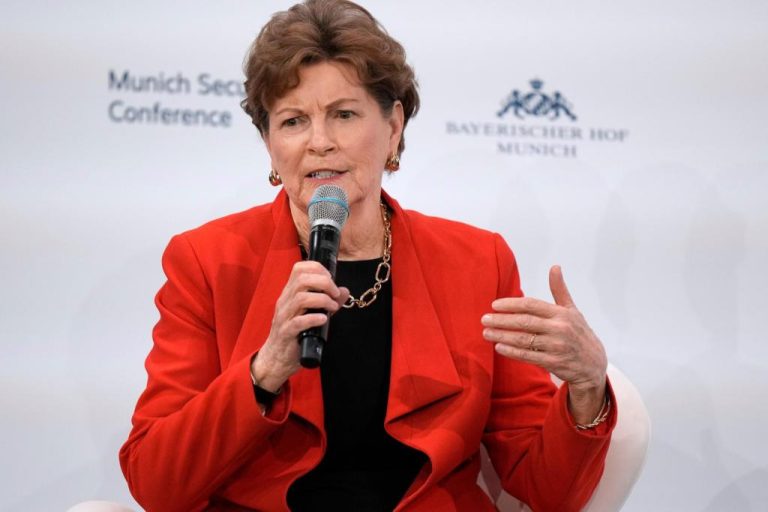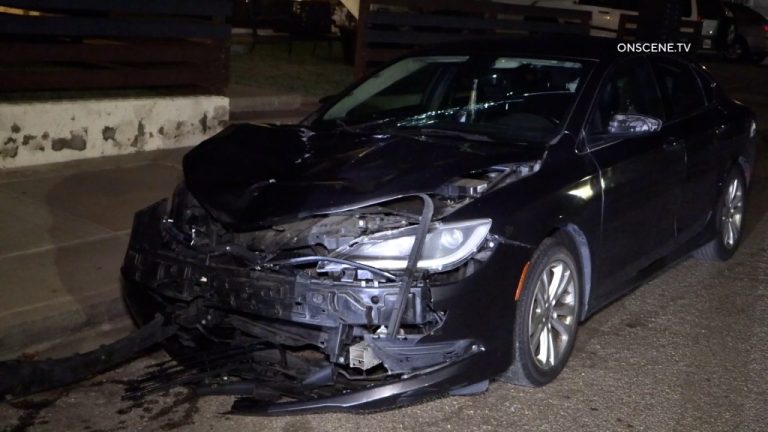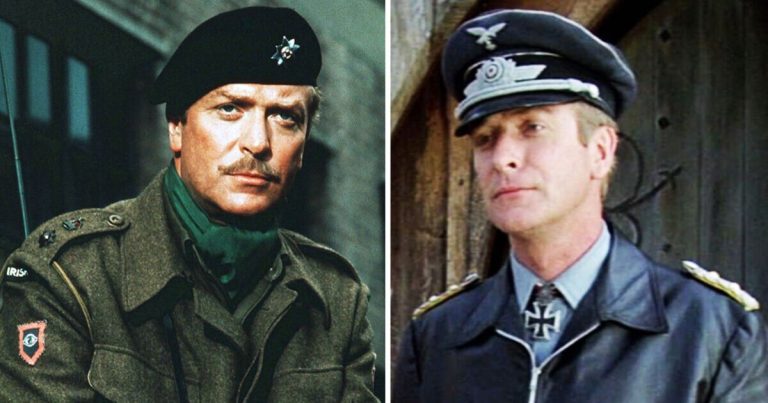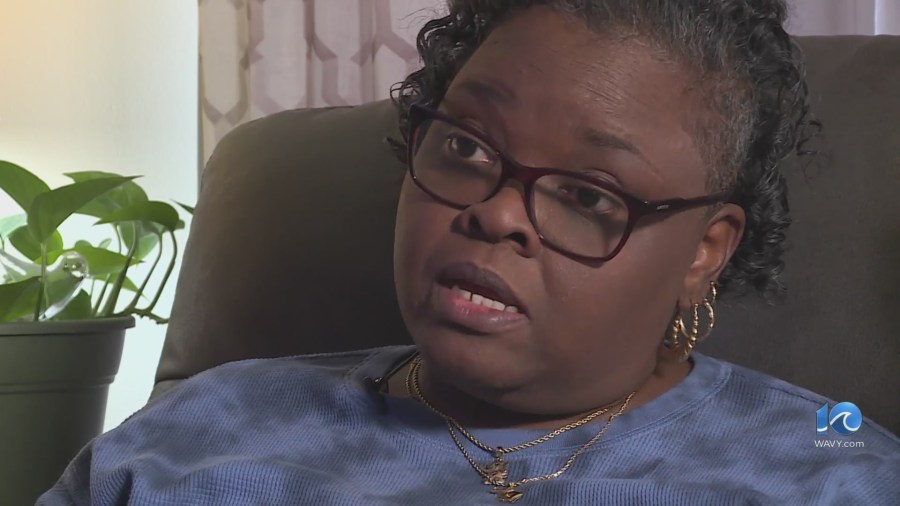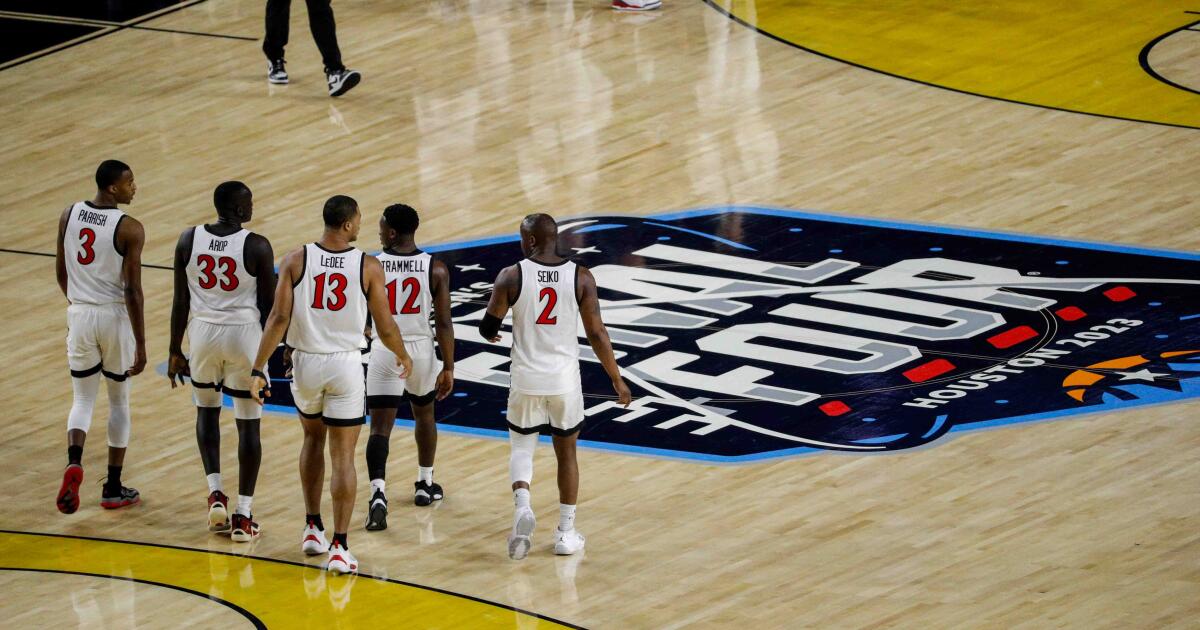
Seven minutes before tip-off Monday night, the gaze of players, coaches and staff will turn to the rafters of Viejas Arena as black curtains are removed to reveal three new banners: One for the 2022-23 Mountain West regular-season title, one for the conference tournament title and one for — wait, did that really happen? — the Final Four.
The crowd will stand and roar, 12,414 basking in the glory of the most magical, historic, extraordinary, inconceivable, unimaginable season in more than a century of San Diego State men’s basketball.
Then they’ll return their eyes to the floor for the season opener against Cal State Fullerton and gaze into the great unknown.
Now what?
There is no manual for what happens next to a program that 25 years ago wallowed among the most woebegone in college basketball, that had never been nationally ranked in Division I until 2010, that hadn’t won a game in the Division I NCAA Tournament until 2011, that until last spring had still never defeated a tournament opponent with a better seed, that hadn’t won a tournament game at all since 2015 … and suddenly was in the national championship game at Houston’s NRG Stadium.
For the sport’s blue bloods, you shrug and continue dumping resources into basketball in a valiant quest to return. You do because you can, power conference members reaping power conference revenues.
But for the Cinderellas that crash the Big Dance, the outsiders from mid-major conferences that spoil the party, the schools propping up athletic budgets from student fees and university coffers, it is a different equation. You don’t have that tradition. You don’t have those revenues. You don’t have that donor base.
History tells us some figure it out, and some don’t — struggling to breathe in the rarefied air of elevated expectations, crushed by the financial pressures of investment with limited resources.
There’s also the math: There were 363 men’s basketball programs in Div. I last season, and 359 didn’t reach the Final Four.
“I mean, it’s hard to get back,” says SDSU coach Brian Dutcher, who was an assistant on Michigan teams in the 1990s that reached back-to-back finals. “The top 12 teams seeded by the tournament last season didn’t make it to the Final Four. … It’s really, really hard to get there.
“First you’ve got to make the tournament. Then you’ve got to be playing your best basketball. It’s hard.”

San Diego State runs on the court for its Final Four game against Florida Atlantic.
(Meg McLaughlin/The San Diego Union-Tribune)
The glistening model for every Cinderella, the program Dutcher most often says the Aztecs emulate, is Gonzaga, a private university founded in 1887 in eastern Washington by a Jesuit missionary to serve Native American children from the Upper Spokane tribe. The Bulldogs have played in 24 straight NCAA Tournaments, five times as a No. 1 seed, finally breaking through to the Final Four (and championship game) in 2017 and doing it again in 2021.
Undergraduate enrollment dipped below 3,000 in the late 1990s. It has more than doubled to 7,200 thanks to a swell in applications coinciding with the national success of its basketball program. The growth was so swift, they converted hotels across the street from campus to student dormitories.
Jerry Logan, an assistant dean of public affairs at Brown University, has studied the phenomenon in a pair of books he co-authored with Graham Honaker from Butler University, examining what the future holds for Cinderellas after improbable runs through the NCAA Tournament.
“One of the key things, and I think it’s true on the basketball side and the institutional side, is you’re trying to find ways to take that short-term magic, the lightning in a bottle, and turn it into a long-term asset,” Logan says. “There’s a recognition and acceptance of the fact that men’s basketball provides us opportunities and we want to cash in on those opportunities by telling people and showing people the rest of the institution.
“It’s the front-porch thing … the rising-tide-lifts-all-boats ethos.”
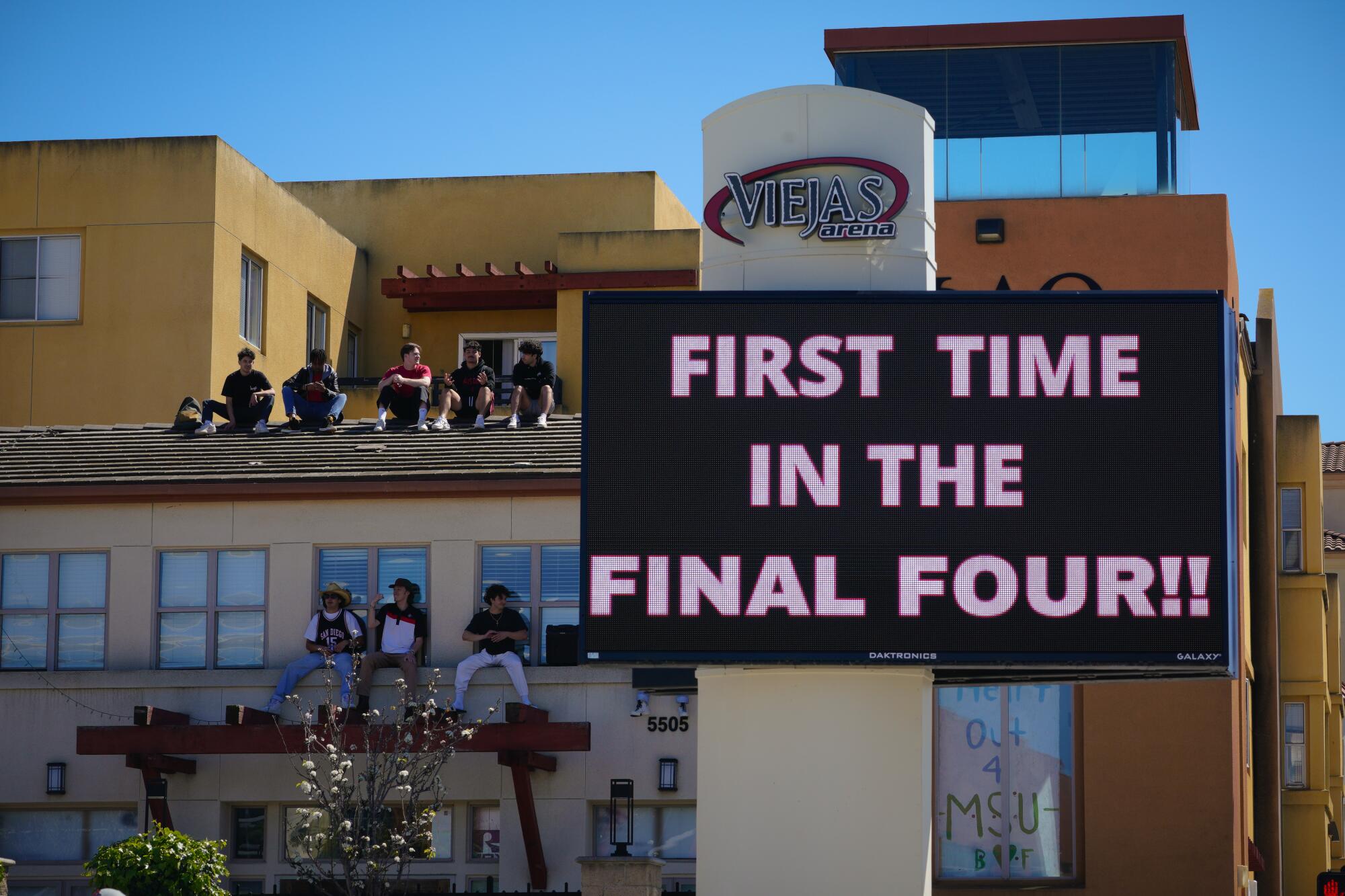
Fans in and around Viejas Arena rallied around the Aztecs last spring.
(Nelvin C. Cepeda/The San Diego Union-Tribune)
But for every Gonzaga Bulldog is a Butler Bulldog.
Butler showed promise, reaching the national championship game in 2010 and doing it again in 2011. But even with a substantial financial commitment to the program and two conference changes, they are on their fourth head coach since Brad Stevens was plucked by the NBA’s Boston Celtics in 2013. Butler hasn’t played in the tournament since 2018.
Or there’s George Mason, which came out of nowhere to reach the 2006 Final Four. The Patriots have been back to the tournament just twice and not at all since 2011. By 2015, they had bottomed out, finishing 9-22 overall and tied for 12th in the 14-team Atlantic 10.
Wichita State reached the 2013 Final Four out of the Missouri Valley. By 2020, the Shockers had fully melted down with eight players in the transfer portal and coach Gregg Marshall ousted amid allegations of physical and verbal abuse.
Loyola Chicago reached the Final Four in 2018. Last season, the Ramblers went 10-21 and finished last in the A-10.
Virginia Commonwealth has done everything right after its 2011 run to Final Four as a No. 11 seed, upgrading facilities, devoting resources into the program, expanding its donor base, maintaining continuity on the coaching staff, being regular participants in the tournament. But VCU has’t reached the second weekend since 2013 and hasn’t won a game since 2015.
The common thread among Butler, George Mason, Wichita State, Loyola Chicago and VCU is they all parlayed a bump in profile to jump to a better conference, which usually means more exposure and television revenue and NCAA Tournament bids but also a greater chance to get buried in the standings amid stiffer competition. And they all eventually lost the architect of their success to financially greener pastures.
In that regard, SDSU is more like Gonzaga, which stayed in the WCC and has Mark Few in his 25th year as head coach (and 35th with the program).
The Aztecs belong to currently the strongest mid-major conference; the Mountain West put four teams in the tournament in each of the last two years and rated higher than some power conferences. And the 64-year-old Dutcher isn’t going anywhere, with Athletic Director John David Wicker saying he hopes to finalize a contract extension by the season’s end.
SDSU doesn’t need to frantically upgrade infrastructure, with a $15.8 million practice facility opening in 2015 and a 12,414-seat arena in the middle of campus. It has a dedicated fan base with a waiting list for season tickets. It also has what Gonzaga refers to as “campus alignment,” a fancy way of saying the university president, athletic director and head coach are on the same, front-porch, rising-tides page.

San Diego State basketball coach Brian Dutcher talks with his team during an Oct. 2 practice.
(K.C. Alfred/The San Diego Union-Tribune)
SDSU, though, faces two obstacles its mid-major predecessors did not: NIL … and football.
Dutcher lost one starter and several transfer targets to more lucrative name, image and likeness enticements. The co-founder of SDSU’s NIL collective recently said they likely need to double, maybe even triple, this year’s budget to remain competitive in the spring transfer market.
And then there’s football. SDSU plays at the highest Division I level and just opened a $310 million stadium.
Butler plays non-scholarship football that costs exponentially less. Gonzaga, Wichita State and Loyola Chicago all dropped it years ago. George Mason has never played. VCU has resisted periodic calls to add the sport, not wanting to divert resources from a basketball program chasing another Final Four run.
“We call it the football question,” Logan, co-author of “The Cinderella Strategy” and “Unbracketed,” says. “I really think that’s the elephant in the room. If you feel like you’re best made to be a basketball school, how do you do football? I don’t have a good answer for that one.
“It requires such an investment to run those (football) programs and the alumni care that you’re competitive. … I don’t envy those decisions.”
Those decisions are imminent for Wicker, SDSU’s athletic director, with a 3-6 football team on the verge of ending a 14-year streak of bowl eligibility and a $4.8 million buyout in the contract of head coach Brady Hoke, not to mention scant NIL resources and massive stadium debt.
And dreams of joining a power conference and reaping $40 million or more in annual television and bowl revenue have, for now at least, evaporated. The Mountain West distributed just under $6 million per school in 2022-23.
Say a rich alum offers a couple million to help buy out Hoke. Does Wicker accept it, or does he politely suggest diverting it to the basketball team’s NIL collective and Dutcher’s extension?
Back on the floor at Viejas Arena, Dutcher will coach a team with fewer star pieces — five members of the nine-man rotation are gone — and inflated expectations facing one of the nation’s toughest nonconference schedules.

Aztecs fans cheer their team during the semifinal round of the NCAA Tournament.
(K.C. Alfred/The San Diego Union-Tribune)
History is not on his side. Over the past 25 years, only two national runners-up had a better record the following season. North Carolina went from the 2022 NCAA final and preseason No. 1 to missing the tournament. Texas Tech went from the 2019 NCAA final to 18-13.
Even Butler, which returned to the championship game a year later, struggled early despite having most of its roster back and opened 4-4.
“The expectations from game one make it feel like you’re in the postseason, but you’re not,” Logan says. “It’s a long season. If you hadn’t made that run, not as many people would be paying attention and you’d have 10 or 15 games to sort it out. If you lose on the road to some team that’s going to scrape the bottom of your conference, everyone thinks the sky is falling. And it’s not. It’s hard to win on the road in conference. It just always is.
“That pressure, once it’s there, it’s really hard for it to go away. And in a way you don’t want it to, because that means you’re losing a lot and people stopped caring.”
Dutcher has adopted a similar ethos. He plans to install a huge Final Four logo in the practice facility. As a reminder. As a motivator.
“I like to sell accomplishments,” he says. “I want them to look up there and know they’re good and know how good they can be, and see that every day. … The goal remains to continue to recruit, coach and play at a level that allows us to make a return trip to the Final Four.”



